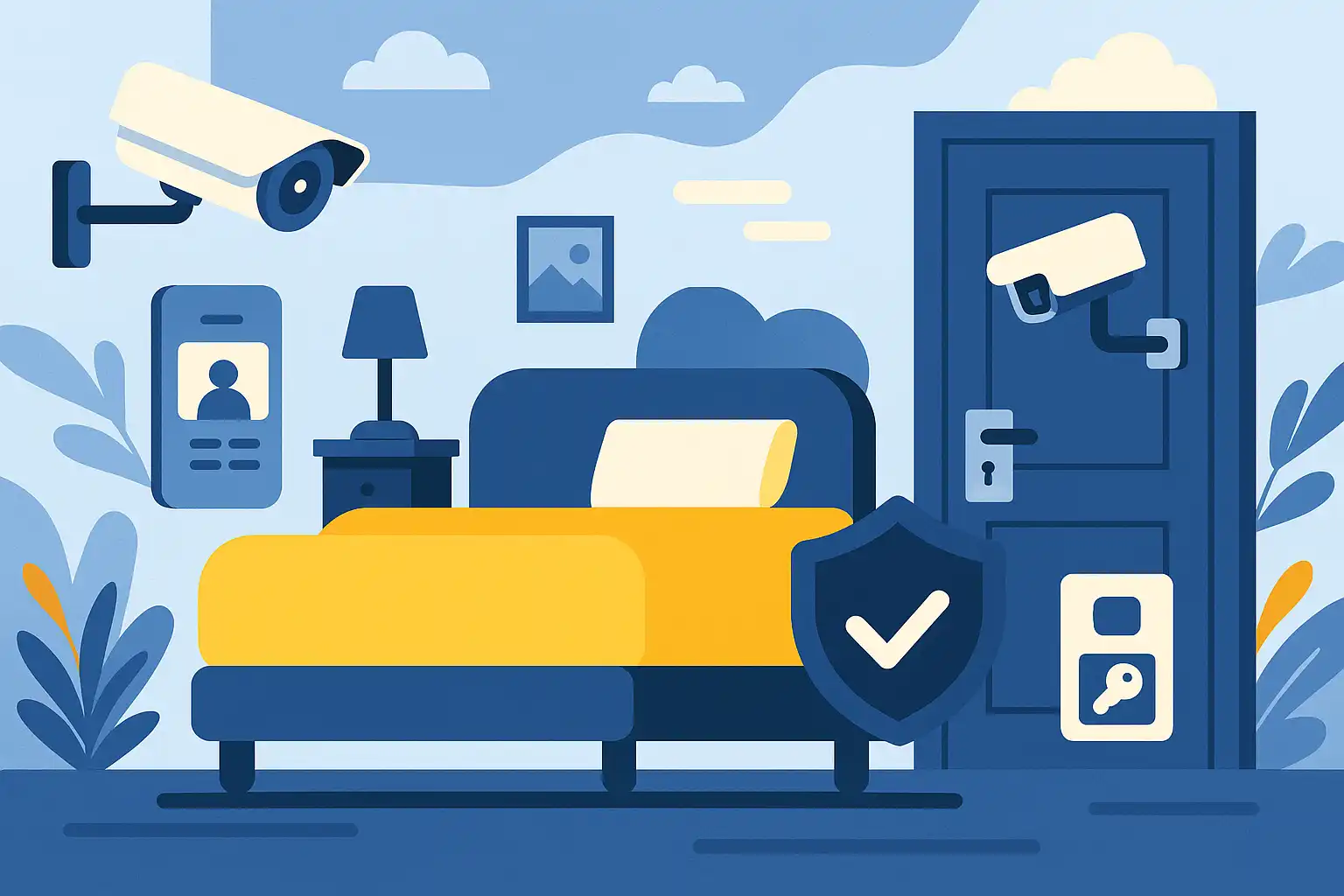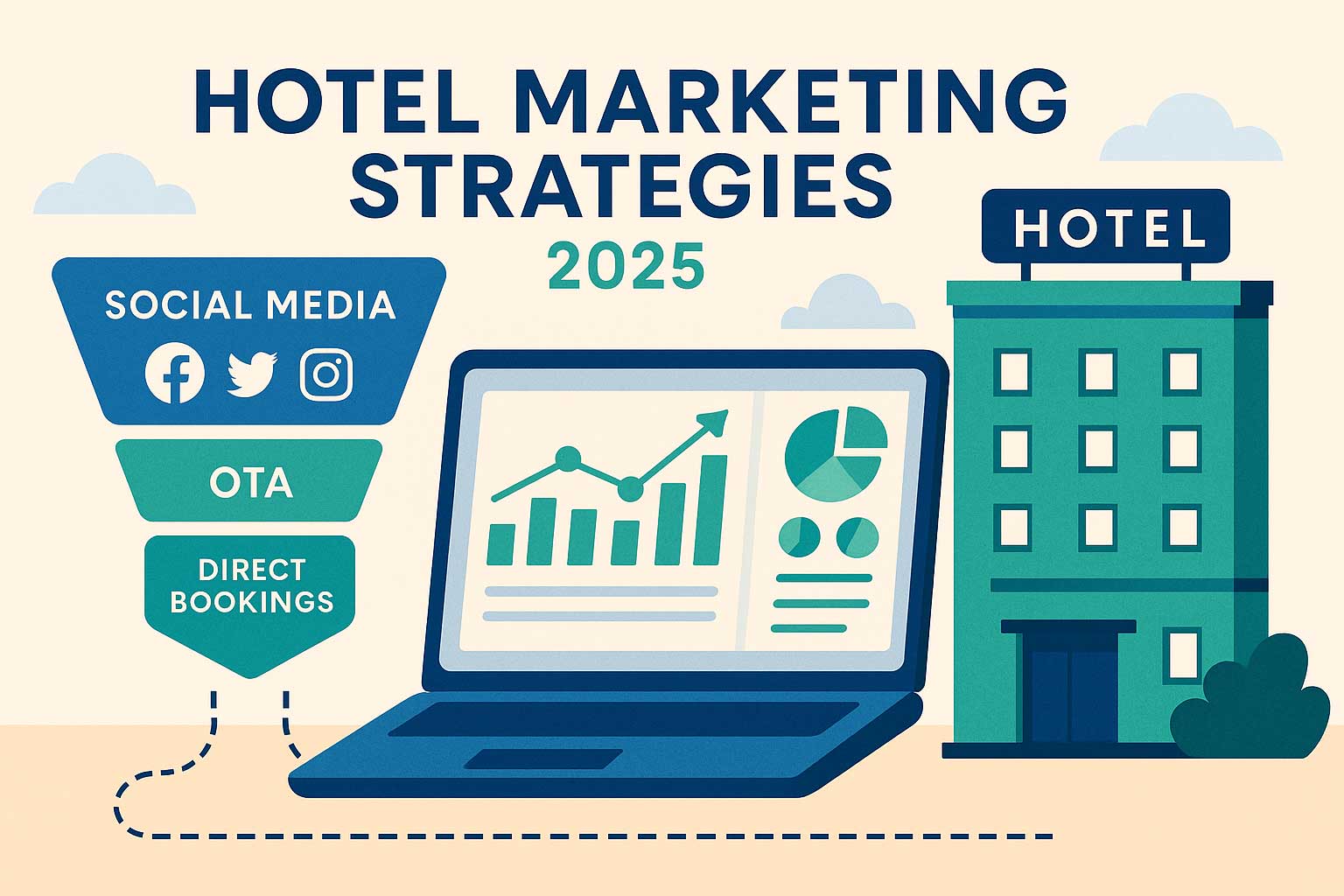Hotel Key Card: Modern Hotel Access Solutions
Sep 18, 2025
 Mika Takahashi
Mika TakahashiPopular Categories
Hotel Technology & InnovationHotel Operations OptimizationDigital MarketingIndustry TrendsRevenue ManagementHospitality Industry
Popular Categories
Trending Post

Hotel Walk Letter Template: Professional Guest Communication

Online Travel Agents: What They Are and How They Work

Hotel Security Systems: Modern Protection Solutions

Hotel Advertising: Complete Guide to Boost Bookings and Revenue

25 Hotel Marketing Strategy Ideas for 2025: Complete Guide

AI Reservation Agent: Revolutionizing Hotel Booking and Guest Experience

PMS Communication: Streamlining Property Management Through Effective Guest Messaging
Table of contents
Over the past forty years, the hospitality industry has seen an incredible shift, with hotel key cards playing a starring role in how guests access their rooms. What started as a simple alternative to metal keys has blossomed into sophisticated technology that boosts both security and convenience. Today, more than 90% of medium to large hotels worldwide rely on some form of electronic key card system, making it a must-have for modern hotel operations.
If you’re a hotel manager thinking about upgrading your access system or a property owner aiming to improve the guest experience, understanding the different types of key cards and their benefits is essential. This guide covers everything you need to know about hotel key cards—from basic magnetic stripe cards to the latest NFC technology—to help you pick the perfect fit for your property.
What is a Hotel Key Card?
Simply put, a hotel key card is an electronic device guests use to unlock their rooms and access other restricted areas within the hotel. These programmable cards have mostly replaced traditional metal keys because they offer better security, ease of use, and operational efficiency.
How do they work? Hotel key cards store encoded information that communicates with electronic door locks. When a guest holds their card up to a reader, the system checks the data and either grants or denies access based on permissions set by the hotel. This means hotels can instantly activate, deactivate, or change access rights without fiddling with physical locks.
The hotel IoT technologies behind hotel key cards are magnetic stripe, RFID (Radio Frequency Identification), NFC (Near Field Communication), and hole punch systems. Each comes with its own perks in security, durability, and functionality, so the best choice depends on your property’s needs and your guests’ preferences.
The journey from traditional keys to electronic access began in the late 1970s and early 1980s, driven by the need for better security and guest convenience. Early on, magnetic stripe cards—similar to credit cards—made it easy to program and reissue room access. Since then, the technology has evolved dramatically, with today’s systems offering encrypted data, mobile integration, and multi-use capabilities.
Most hotel key cards stick to the standard size of 86mm x 54mm, just like a credit card. This makes them compatible with a wide range of hotel door locks systems and easy for guests to carry alongside their other cards.

Types of Hotel Key Cards
Knowing the different types of hotel key cards out there helps you make the right choice for your hotel. Each technology has its own strengths and weaknesses, so consider your property’s size, budget, and guest profile when deciding.
RFID Key Cards
RFID key cards are a big leap forward in hotel access technology. They use Radio Frequency Identification to allow contactless entry and offer stronger security features. These cards have a tiny chip and antenna that communicate wirelessly with door readers—no swiping or touching needed.
One major plus of RFID cards is that they’re much harder to duplicate than magnetic stripe cards. They use advanced encryption and proprietary data formats that require special equipment to copy. Plus, if a guest loses their card, hotels can deactivate it remotely right away, keeping unauthorized people out.
RFID cards usually operate at either 125 kHz or 13.56 MHz frequencies, and their read range can be just a few centimeters or several inches depending on the system. Because they don’t need physical contact, RFID cards tend to last longer, saving hotels money on replacements.
On top of security, RFID technology lets hotels track when and where guests enter rooms, which can be helpful for security and operations.
NFC Hotel Key Cards
NFC, or Near-Field Communication, is the latest in hotel access tech, offering touchless entry and smooth integration with smartphones and smart hotel systems. NFC works similarly to RFID but with a shorter range and extra features that today’s guests expect.
One of the coolest things about NFC cards is how they work with mobile devices. Many hotel chains now let guests use their phones as hotel digital keys through apps, leveraging NFC for a fully contactless experience—a big plus, especially after the pandemic.
NFC cards can do more than just open doors. They can store payment info, loyalty rewards, and special offers, giving hotels a way to boost guest satisfaction and generate extra revenue. Guests can use their NFC cards to pay at hotel restaurants, gift shops, and more, making transactions easy and cash-free.
NFC’s convenience also opens doors for targeted marketing—hotels can program cards with spa discounts, restaurant deals, or other promotions that pop up when guests enter certain areas, helping to boost sales.
Magnetic Stripe Key Cards
Magnetic stripe cards are still common, especially in smaller or budget hotels. These cards have a black magnetic stripe on the back, similar to credit cards, and guests swipe or insert them to unlock doors.
The biggest draw of magnetic stripe cards is their low cost—they’re cheap to produce, which is great for hotels on a budget or those with high card replacement rates. Plus, most guests are already familiar with how to use them, so there’s little confusion.
But there are downsides. Magnetic stripes can get demagnetized by everyday items like cell phones or purse clasps, making cards stop working. They’re also easier to copy than RFID or NFC cards, which can be a security concern.
To help cards last longer, hotels should remind guests to keep them away from magnets and avoid bending or scratching the stripe. Despite these issues, magnetic stripe cards remain a practical choice for many properties.
Hole Punch Key Cards
Hole punch cards are the simplest kind of hotel access card, using mechanical hole patterns to unlock doors. While they’re becoming rare, some budget hotels still use them for basic access control.
These cards work by having holes punched in specific spots that line up with mechanical readers in locks. They’re inexpensive and require little maintenance, making them suitable for properties that don’t need high-tech solutions.
However, hole punch cards can’t offer features like instant deactivation, access logs, or integration with hotel management systems. Because of this, most new hotels are moving toward electronic systems with more flexibility and security.
Benefits of Hotel Key Cards for Properties
Switching to hotel key cards brings a lot of benefits for hotels of all sizes, from cozy boutique inns to big international chains. Beyond just unlocking doors, these systems boost security, improve operations, and even open new revenue streams.
Security is a big one. Lost or stolen cards can be deactivated instantly, unlike metal keys that might require changing locks—a costly and time-consuming process. This keeps guests safe and reduces hotel liability.
Hotels also save money by avoiding frequent lock changes when keys go missing. Electronic key cards let you simply deactivate the lost card and issue a new one without changing hardware.
Guests appreciate the convenience too. Key cards are lightweight, easy to carry, and fit right into wallets alongside credit cards. This small comfort can lead to better reviews and repeat business.
Integration with hotel management systems means hotels can track who accesses which areas and when, helping with security and optimizing housekeeping schedules.
Custom-designed key cards also give hotels a chance to showcase their brand with logos and artwork, turning cards into mini marketing tools that guests might keep as souvenirs.
Plus, with NFC and RFID cards, hotels can enable payments and store loyalty info right on the card, turning them into profit centers by encouraging guests to spend more on property.

Choosing the Right Hotel Key Card System
Picking the best key card system depends on many factors, including your hotel’s size, security needs, budget, and guest preferences.
Big hotels with lots of guests usually benefit from RFID or NFC systems because they’re durable and packed with features. Smaller hotels might find magnetic stripe cards meet their needs without breaking the bank.
Security needs differ too. Luxury hotels or those in higher-risk areas should go for encrypted, tamper-resistant RFID or NFC cards. Budget hotels in safer locations might be fine with magnetic stripe cards.
Don’t forget to factor in both upfront costs and ongoing expenses. RFID and NFC systems cost more initially but often save money long-term with fewer replacements and better functionality. It’s smart to calculate total costs over several years before deciding.
Make sure your chosen system works with your existing door locks—some older locks may need upgrades to support newer card technologies.
Consider your guests as well. Business travelers comfortable with tech may prefer mobile keys and NFC features, while other guests might appreciate the simplicity of magnetic stripe cards.
Think about the future too. Choose systems that can grow with your hotel and integrate easily with other technologies like property management systems or point-of-sale software.
Custom Hotel Key Card Options and Features
Today’s hotel key cards aren’t just about access—they’re also a chance to create memorable guest experiences and boost your brand.
You can get full-color printing on durable 1000-micron PVC plastic, allowing vibrant designs that hold up to daily use.
Cards are waterproof, perfect for poolside or outdoor areas, and come with finishing options like holographic stickers, matte or gloss coatings, and metallic powders for a premium look.
You can also add barcodes or QR codes that link to websites, promotions, or apps, creating interactive experiences for your guests. Variable data printing lets each card be unique, helping with tracking and personalization.
Serialization helps manage inventory and security by giving each card a unique ID, so you always know where your cards are and when they’re used.
Most suppliers require minimum orders of around 500 cards, with lead times of 4-5 weeks for custom printing—so plan ahead to keep your stock ready.
Technical Specifications and Standards
Knowing the technical specs and standards for hotel key cards helps ensure your cards work smoothly with your locks and meet industry requirements.
ISO 14443 is the main standard for contactless cards, ensuring compatibility across different manufacturers.
Memory varies by card type: magnetic stripe cards store around 100-200 bytes, enough for basic access info; RFID cards store several kilobytes, enabling more features; NFC cards have even more capacity for payments and loyalty data.
Cards usually operate reliably between -10°C and +50°C, suitable for typical hotel environments. Some can handle more extreme conditions if needed.
Durability is key—quality cards resist bending, moisture, and interference, lasting through thousands of uses.
Frequencies commonly used are 125 kHz for low-frequency and 13.56 MHz for high-frequency systems, each with their own benefits.
ISO-certified manufacturing means your cards are made to high standards, minimizing failures and ensuring consistent performance.
Hotel Key Card Supplier Considerations
Choosing the right supplier is about more than just buying cards—it’s about building a partnership that supports your hotel’s success.
Reliable supply chains and good inventory management are critical to avoid running out of cards, which can disrupt operations and frustrate guests.
Fast delivery options, often within 1-3 days, help you stay stocked even during busy seasons or unexpected demand.
Many suppliers offer free samples so you can test cards with your locks before placing big orders—this reduces risk and ensures compatibility.
Flexible payment terms like Net 30 can help manage your hotel’s cash flow, and suppliers with flexible minimum order sizes can better match your inventory needs.
Look for suppliers with industry certifications and approved vendor status from major hotel brands—they tend to offer higher quality and reliability.
Excellent customer service is a must—responsive teams that understand hotel needs can help with technical support and urgent replacements.
Consider shipping policies and taxes too—some suppliers only charge sales tax in certain states, which can save you money.
As hotel security evolves, mobile keys and biometric access are becoming more common. Choosing a supplier who supports these future technologies can help you stay ahead.
Building a strong relationship with your supplier means more than just transactions—it means getting valuable insights, tech advice, and support for projects that enhance your guests’ experience and your hotel’s efficiency.
